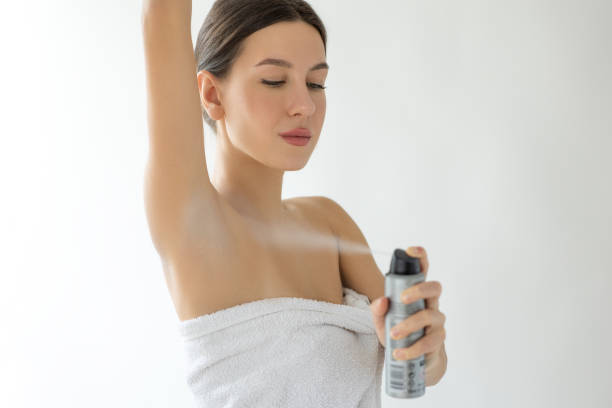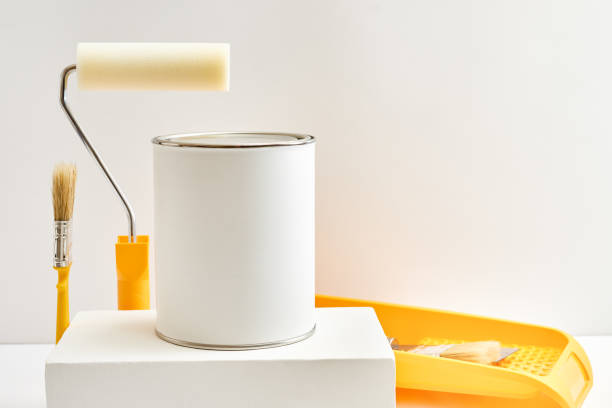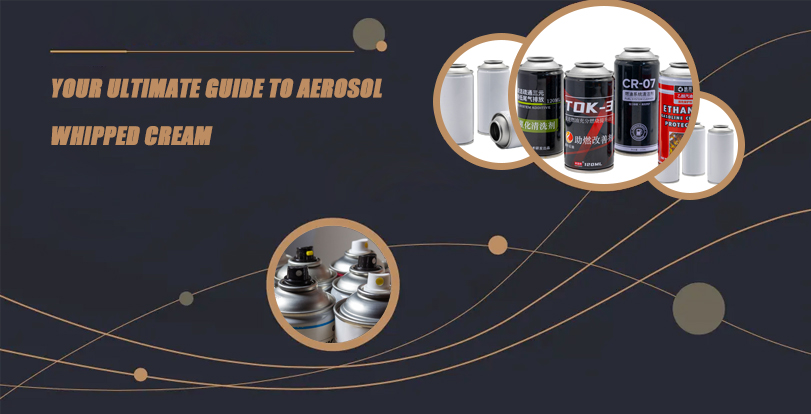Aerosol antiperspirant. For many of us, it’s a non-negotiable part of our daily routine, a quick spritz that promises confidence and dryness throughout the day. You grab it, spray it, and forget about it. But have you ever stopped to think about what’s actually in that can, how it works its magic, or if you’re even using it correctly?
Dealing with unwanted sweat and body odor is a universal experience. Whether you’re prepping for a high-stakes presentation, hitting the gym, navigating a crowded commute, or simply living life in a warm climate, feeling fresh and dry can make a world of difference to your comfort and self-assurance. Aerosol antiperspirants are one of the most popular choices for tackling this challenge, known for their convenience and quick application.
But with popularity comes questions. Are they safe? Are they bad for the environment? What’s the difference between an antiperspirant and a deodorant? How do I choose the best one for me?
Fear not! This comprehensive guide is designed to be your one-stop resource for everything related to aerosol antiperspirants. We’ll delve into the science, bust some myths, weigh the pros and cons, guide you on proper usage, and help you navigate the crowded aisle to find your perfect match. By the end of this article, you’ll be an aerosol antiperspirant expert, armed with the knowledge to stay dry, comfortable, and confident.
What Exactly Is an Aerosol Antiperspirant?
Let’s start with the basics. It sounds simple, but there’s often confusion between antiperspirants and deodorants. They are not the same thing, though many products offer combined benefits.
- ยาดับกลิ่น: Primarily tackles body odor. Body odor isn’t caused by sweat itself, but by bacteria on your skin breaking down the sweat. Deodorants typically contain antimicrobial ingredients to kill these bacteria and fragrances to mask any remaining odor. They don’t stop you from sweating.
- Antiperspirant: Focuses on reducing or stopping sweat production. They work by temporarily blocking your sweat ducts. By reducing sweat, they indirectly help with odor, as there’s less moisture for bacteria to feast on.
- Aerosol Antiperspirant: This refers specifically to the delivery system. An antiperspirant formulation is mixed with propellants and packaged under pressure in a can with a nozzle. เมื่อคุณกดหัวฉีด, the pressure forces the mixture out as a fine spray or mist.
How Does the Antiperspirant Magic Happen?
The key players in any antiperspirant are aluminum-based compounds. Common examples include:
- Aluminum Chlorohydrate
- Aluminum Zirconium Tetrachlorohydrex GLY
- Aluminum Chloride (often found in stronger, clinical-strength formulations)
When you spray an aerosol antiperspirant onto your skin, these aluminum compounds dissolve in the moisture present (your sweat). They then form a temporary gel-like plug within the upper part of your sweat ducts. This plug physically blocks sweat from reaching the skin’s surface.
Don’t worry, this isn’t permanent! The plugs are gradually broken down and washed away through natural skin shedding and washing, which is why you need to reapply antiperspirant regularly (usually daily). Your body also doesn’t “store” the aluminum systemically in significant amounts from topical application; it primarily stays localized in the upper skin layers.
The Aerosol Delivery System
ที่ “aerosol” part is about how the product gets onto your skin. The can contains the active antiperspirant ingredients, emollients (for skin feel), fragrance (if any), และ ใบพัด. Propellants are liquefied gases (like butane, isobutane, โพรเพน) that create pressure inside the can. When you press the actuator (the button), it opens a valve, and the internal pressure pushes the liquid mixture out through the nozzle. As it exits, the propellant rapidly evaporates, leaving the antiperspirant ingredients behind on your skin as a fine, often dry-feeling layer.
Why Choose an Aerosol Antiperspirant? The Pros
Aerosols remain popular for several compelling reasons:
- Speed and Convenience: Application is incredibly fast. A quick spray under each arm takes mere seconds.
- Quick Drying: The propellants evaporate almost instantly upon contact with skin, meaning the antiperspirant feels dry very quickly. This allows you to get dressed almost immediately without worrying about wet patches or transferring product onto clothes (though waiting a moment is still ideal).
- Cooling Sensation: The rapid evaporation of the propellants creates a distinct cooling effect on the skin, which can feel refreshing, especially in warm weather or after a shower.
- Wide Coverage: The spray format allows for easy coverage of the entire underarm area with minimal effort.
- “Touchless” Application: Unlike roll-ons or sticks, the applicator doesn’t directly touch your skin, which some users prefer for hygiene reasons, especially if the product might occasionally be shared (though sharing personal care products is generally not recommended).
- No Clumping or Crumbly Residue: Unlike some solid sticks that can sometimes leave clumps or visible residue if over-applied, aerosols generally go on as a fine, even mist.
Things to Consider Before Spraying: The Cons & Drawbacks
While convenient, aerosol antiperspirants aren’t without their downsides and considerations:
- Inhalation Risk: This is perhaps the most significant safety concern specific to aerosols. The fine mist can be easily inhaled, especially if used in a poorly ventilated space. While occasional, minor inhalation is unlikely to cause harm, deliberately inhaling propellants is dangerous, and frequent inhalation in confined spaces is best avoided. Always use aerosols in a well-ventilated area (like a bathroom with the fan on or a window open) and avoid spraying directly towards your face.
- Environmental Concerns:
- VOCS: The propellants used (butane, isobutane, โพรเพน) are Volatile Organic Compounds (VOCS). VOCs contribute to the formation of ground-level ozone (smog), which is an air pollutant and can exacerbate respiratory problems. While modern aerosols no longer contain ozone-depleting CFCs (chlorofluorocarbons), VOC emissions are still an environmental consideration.
- บรรจุภัณฑ์: Aerosol cans are typically made of aluminum or steel, which are recyclable. อย่างไรก็ตาม, they are pressurized containers and require specific handling in recycling streams. Check your local recycling guidelines.
- Potential for White Marks: While many modern formulations are designed to be “anti-white marks,” some aerosol antiperspirants can still leave chalky residue on dark clothing if sprayed too close, applied too heavily, or if you don’t allow a few moments for it to dry completely before dressing.
- Less Precise Application: Compared to a roll-on or stick where you have direct control over placement, a spray can cover a wider area, potentially getting onto clothing or surrounding skin unnecessarily.
- Travel Restrictions: กระป๋องสเปรย์, especially larger ones, are often subject to restrictions in both carry-on and checked baggage on airplanes due to their flammable nature and pressurized contents. Always check airline regulations before flying. Travel-sized options (typically under 100ml/3.4oz) are usually permissible in carry-on liquids bags.
- Initial Cold Shock: That cooling sensation mentioned as a pro can be a con for some, feeling unpleasantly cold, especially on sensitive skin or in colder environments.
- Potential Skin Irritation: While many formulations are gentle, ingredients like fragrance or alcohol (though many are alcohol-free) can cause irritation, stinging (especially after shaving), or allergic reactions in individuals with sensitive skin. The force of the spray itself can also sometimes be irritating.
- ความไวไฟ: Aerosol contents are flammable due to the propellants. Never use them near open flames, sparks, or sources of ignition (like cigarettes, pilot lights, or while using heated styling tools). Store them away from heat.
How to Use Aerosol Antiperspirant Correctly for Maximum Effectiveness and Safety
Using an aerosol antiperspirant might seem straightforward, but following these steps ensures you get the best results while minimizing potential issues:
- Shake Well: This is CRUCIAL! The active antiperspirant ingredients can settle at the bottom of the can. Shaking vigorously for several seconds before each use mixes the ingredients and propellants thoroughly, ensuring an even distribution and effective dose with each spray. If you skip this, you might just be spraying propellant and fragrance.
- Hold at the Right Distance: Check the product label, but the general recommendation is to hold the can about 15 cm (หรือ 6 นิ้ว) away from your underarm skin. Holding it too close can result in a cold, wet blast, uneven application, potential skin irritation, and increase the likelihood of white marks. Holding it too far away disperses the product too much, reducing effectiveness.
- Spray in Short Bursts: Don’t just hold the nozzle down continuously. Aim for a short, sharp burst of 1-2 seconds per underarm. This is usually sufficient to cover the area effectively without over-applying or wasting product.
- Apply to Clean, Dry Skin: For best results, apply antiperspirant after showering and thoroughly drying your skin. Applying to wet skin can dilute the product and hinder the formation of the sweat duct plugs. Applying to already sweaty or unclean skin is less effective and won’t eliminate existing odor. Some experts suggest applying antiperspirant at night before bed, as sweat production is naturally lower, allowing the plugs to form more effectively overnight.
- Ensure Good Ventilation: Always use aerosol antiperspirants in a well-ventilated room. Open a window or turn on the bathroom extractor fan. Avoid using them in small, enclosed spaces like closets or cars. Aim the spray away from your face and try not to breathe in the mist.
- Allow to Dry: Although aerosols dry quickly, give it a few moments before putting on clothes. This helps prevent the product from rubbing off onto fabric and reduces the chance of white marks.
- Store Properly: Keep the can away from direct sunlight, แหล่งความร้อน, and open flames. Do not puncture or incinerate the can, even when empty.
Decoding the Ingredient List: What’s Inside the Can?
Understanding the label can help you choose the right product and be aware of what you’re putting on your skin. Key components typically include:
- Active Ingredient(S): Usually one or more aluminum compounds (เช่น, Aluminum Chlorohydrate, Aluminum Zirconium Tetrachlorohydrex GLY) listed with their concentration percentage. This is what stops the sweat. Higher percentages generally mean stronger protection.
- ใบพัด: Gases like Butane, Isobutane, and Propane. These provide the pressure to expel the product.
- Solvents/Carriers: Liquids like Cyclopentasiloxane or other silicones that help dissolve ingredients and provide a smooth feel.
- ผู้ทำให้ผิว: Ingredients like C12-15 Alkyl Benzoate, PPG-14 Butyl Ether, or certain oils that help condition the skin and improve the feel of the product.
- กลิ่นหอม (Parfum): Provides the scent. หากคุณมีผิวบอบบาง, look for fragrance-free options.
- Masking Agents/Additives: Ingredients like Disteardimonium Hectorite might be included to help stabilize the formula or improve texture.
- Optional Ingredients: Some formulas may contain added moisturizers (like sunflower seed oil), skin conditioners, or specific technologies claimed to reduce white marks or last longer. Check for “Alcohol-Free” if alcohol causes stinging or dryness for you (note: this usually refers to ethyl alcohol/ethanol).
Addressing Common Concerns & Busting Myths
Aerosol antiperspirants, particularly the aluminum compounds they contain, have been the subject of various health concerns over the years. Let’s look at the science:
Myth: Antiperspirants Cause Breast Cancer. Fact: This is one of the most persistent myths. The concern arose from theories that aluminum compounds could be absorbed through the skin (especially through nicks from shaving) and mimic estrogen or accumulate in breast tissue, potentially promoting cancer growth. อย่างไรก็ตาม, major health organizations like the American Cancer Society, the National Cancer Institute (US), and Cancer Research UK have stated that there is no convincing scientific evidence linking the use of underarm antiperspirants to breast cancer. Studies have not shown significant absorption of aluminum through the skin, nor have they found higher concentrations of aluminum in breast cancer tissue compared to normal tissue.
Myth: Antiperspirants Cause Alzheimer’s Disease. Fact: Concerns about aluminum and Alzheimer’s disease emerged decades ago based on some initial findings (like aluminum being found in the brain plaques characteristic of the disease). อย่างไรก็ตาม, extensive research since then has failed to establish a causal link between aluminum exposure from everyday sources (including antiperspirants, cookware, or diet) and Alzheimer’s disease. The Alzheimer’s Association and other leading health bodies state that aluminum is not considered a significant risk factor. The amount of aluminum absorbed from antiperspirants is minimal compared to dietary intake.
Myth: Antiperspirants Prevent Your Body from Releasing Toxins. Fact: The idea that sweating is a primary way your body detoxifies is largely a misconception. Your liver and kidneys are the main organs responsible for detoxification. While sweat does contain trace amounts of waste products, its primary role is temperature regulation. Blocking sweat glands in a small area like the underarms does not impede your body’s overall ability to regulate temperature or filter waste. You still sweat from other parts of your body.
Concern: Skin Sensitivity and Irritation. Fact: This is a valid concern for some individuals. Fragrances, alcohol, the aluminum salts themselves, or even the force of the spray can cause redness, itching, or stinging, particularly on freshly shaved or sensitive skin. Choosing fragrance-free, alcohol-free formulas designed for sensitive skin can help. Patch testing on a small area first is always a good idea if you’re prone to reactions.
Choosing the Right Aerosol Antiperspirant for You
With so many options on the shelves, how do you pick the best one? Consider these factors:
- Level of Protection Needed:
- Standard: Offers 24-48 hours of protection, suitable for average daily activities.
- Clinical Strength: Contains higher concentrations of active ingredients, designed for excessive sweating (hyperhidrosis) or demanding situations. Often recommended for nighttime application.
- Scent Preference:
- Fragranced: Available in a huge variety of scents, from fresh and clean to floral, fruity, or musky.
- Unscented/Fragrance-Free: Ideal if you have sensitive skin, are sensitive to smells, or don’t want your antiperspirant clashing with your perfume or cologne.
- ความไวของผิวหนัง: Look for formulas specifically labeled “for sensitive skin,” “alcohol-free,” หรือ “fragrance-free.” These often contain soothing or moisturizing ingredients.
- Desired Duration: Most products now claim 24h, 48h, or even 72h protection. Choose based on your needs and reapplication habits. Remember that effectiveness can decrease with activity, heat, and washing.
- Specific Features:
- Anti-White Marks: Formulated to minimize chalky residue on clothes.
- Anti-Yellow Stains: Designed to prevent the yellowish stains that can sometimes build up on white clothing over time (a reaction between sweat, sebum, aluminum salts, and laundry detergent).
- Sport/Motion-Activated: Often claim enhanced protection during physical activity.
- Added Moisturizers: Include ingredients to help keep underarm skin feeling soft.
Read labels, consider your personal needs and preferences, and don’t be afraid to try a few different brands or formulations to find what works best for you.
ผลกระทบต่อสิ่งแวดล้อม & ความยั่งยืน: A Closer Look
The environmental footprint of aerosol antiperspirants is a valid consideration.
- ใบพัด (VOCS): As mentioned, the butane, isobutane, and propane used are VOCs that contribute to smog. While they don’t deplete the ozone layer like the banned CFCs, air quality is still a concern. Some brands are exploring compressed aerosol technology, which uses less propellant gas for the same amount of product, reducing the packaging size and propellant usage per application.
- Recycling: Aluminum and steel cans are widely recyclable. อย่างไรก็ตาม, aerosol cans need special handling because they are pressurized. Check your local recycling program’s guidelines. Often, they require the can to be completely empty and sometimes specify removing the plastic cap. Never try to puncture or flatten an aerosol can yourself.
- Alternatives: If environmental impact is a major concern, you might consider non-aerosol options like sticks, roll-ons, creams, or deodorant bars (though remember deodorants don’t stop sweat). These generally have less packaging waste per use and don’t involve VOC propellants.
Manufacturers are increasingly aware of environmental concerns and are exploring more sustainable packaging options and formulations.
คำถามที่พบบ่อย (คำถามที่พบบ่อย) About Aerosol Antiperspirants
Q1: Can I use aerosol antiperspirant on other parts of my body? ก: While primarily designed for underarms, some people use antiperspirants on areas like hands, feet, or along the hairline to control sweat. อย่างไรก็ตาม, be cautious. Avoid sensitive areas like the face or groin unless the product is specifically designed for that purpose. Always patch test first, as skin sensitivity varies across the body. Ensure good ventilation and avoid inhalation.
Q2: How long does a typical can of aerosol antiperspirant last? ก: This depends heavily on the can size (เช่น, 150มล., 250มล.), how often you apply it (once or twice daily), and how long you spray each time. A standard 150ml can used once daily with short bursts might last roughly 4-8 weeks.
Q3: Is it safe to use aerosol antiperspirants during pregnancy or breastfeeding? ก: There’s no strong evidence to suggest that topical use of standard antiperspirants is harmful during pregnancy or breastfeeding, as aluminum absorption through the skin is minimal. อย่างไรก็ตาม, some individuals prefer to switch to aluminum-free deodorants during this time as an extra precaution. Inhaling the spray should always be avoided, especially during pregnancy. If you have concerns, consult your doctor.
Q4: What’s the real difference between “men’s” และ “women’s” aerosol antiperspirants? ก: Functionally, often very little. The active ingredients (aluminum compounds) and their concentrations are frequently similar. The main differences usually lie in the fragrances used (traditionally more musky/woody for men, floral/fruity/powdery for women) and the packaging design/marketing. Choose based on the scent and features you prefer, regardless of the label.
Q5: Can I apply aerosol antiperspirant immediately after shaving? ก: You can, but be prepared for potential stinging, especially if the product contains alcohol or fragrance, or if your skin is sensitive. Shaving creates micro-abrasions on the skin. Waiting a little while after shaving, or choosing an alcohol-free, sensitive skin formula, can help minimize irritation.
Q6: Why does my antiperspirant sometimes seem to stop working? ก: Several factors could be at play: * Incorrect Application: Not shaking the can, not applying to clean/dry skin, not using enough. * Tolerance: While not scientifically proven that you build up tolerance, some people feel switching brands or types occasionally helps. * Increased Stress/Heat: Your body might simply be producing more sweat than usual. * Expired Product: Check the expiration date. * Consider trying a clinical strength formula or applying at night.
Q7: What should I do if an aerosol antiperspirant irritates my skin? ก: Stop using the product immediately. Wash the affected area gently with mild soap and water. Apply a soothing, fragrance-free moisturizer or hydrocortisone cream if needed for itching or redness. Switch to a formula designed for sensitive skin, ensuring it’s alcohol-free and fragrance-free. If irritation persists, consult a doctor or dermatologist.
Q8: Are aerosol antiperspirants really flammable? ก: ใช่, the propellants used (butane, isobutane, โพรเพน) are highly flammable. The spray itself and the contents of the can can easily ignite. Never use or store them near open flames, sparks, excessive heat, or sources of ignition.
บทสรุป: Staying Dry and Confident
Aerosol antiperspirants offer a fast, convenient, and effective way to manage sweat and stay feeling fresh. Their quick-drying nature and easy application make them a popular choice worldwide. By understanding how they work, the ingredients involved, and how to use them correctly – especially the importance of shaking the can and ensuring good ventilation – you can maximize their benefits while minimizing potential drawbacks like white marks or inhalation risks.
While health concerns regarding aluminum have been largely debunked by major scientific bodies, it’s always wise to choose products that suit your skin type and sensitivity level. Pay attention to ingredients, consider unscented or alcohol-free options if needed, and don’t hesitate to explore different strengths or features to find your perfect match. Remember to also consider the environmental aspect and recycle the cans responsibly according to your local guidelines.
ในที่สุด, the choice of antiperspirant is personal. Aerosols provide a specific user experience that many find preferable. Armed with the knowledge from this guide, you can confidently navigate your options and keep sweat concerns at bay.
If you are looking for a reliable source for aerosol antiperspirants or other personal care aerosol products, consider ฟานซุน. As a world-class manufacturer and supplier, FANXUN has extensive experience in producing high-quality aerosol products and can offer solutions in various specifications, formulations, and packaging shapes to meet diverse market needs.























